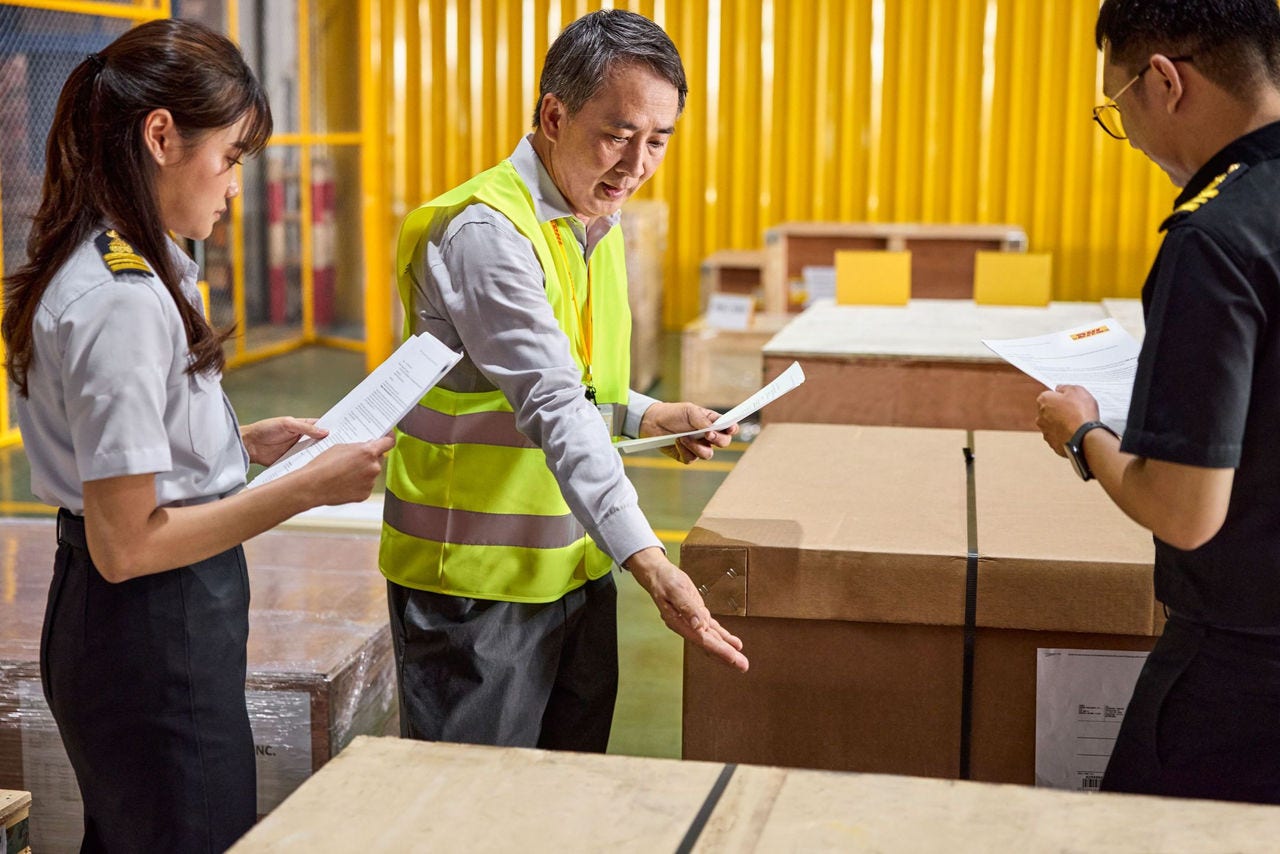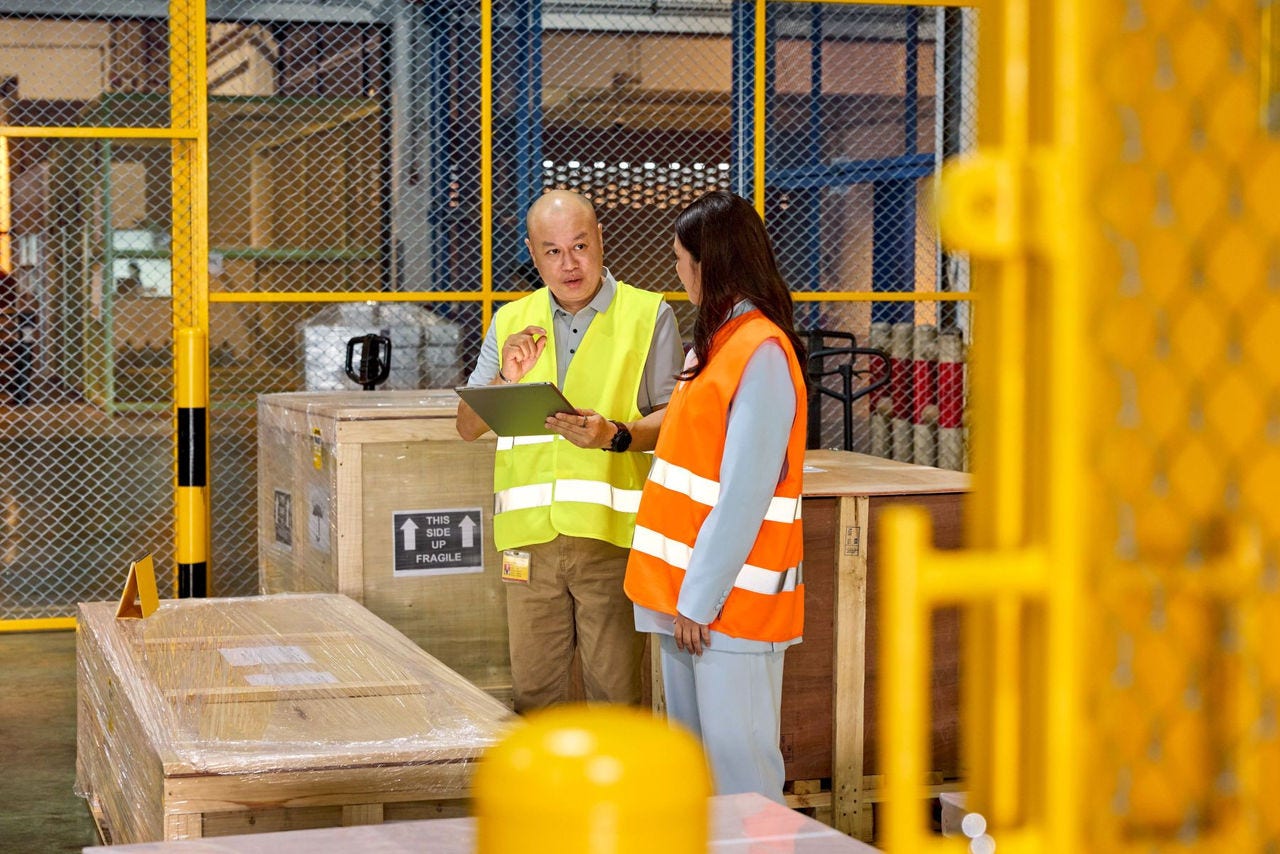
To bring cargo from overseas to Japan, the "import customs clearance" process is essential. This will involve inspection and scrutiny of customs so as to facilitate the formal transit of goods within the local market.
The import customs clearance process has other uses beyond tax collection, it also protects national safety and quality standards. For example, stringent checks are made to block anything illegal or hazardous to food safety. These systems safeguard consumers and domestic industries, while providing the basis of fair and easy trade.
As this is a specialized process, it is recommended to work with professional logistics companies, licensed customs brokers, and customs agencies. Collaboration with specialists can prevent mistakes in the process and eliminate cost and time losses.
Understanding the Import Customs Clearance Process
Actual import customs clearance follows these steps:
- Transport of cargo to bonded areas
- Preparation and submission of required documentation
- Import declaration using NACCS (Nippon Automated Cargo and Port Consolidated System)
- Document review and cargo inspection by customs
- Payment of tariffs and consumption taxes
- Import permit and cargo release
Import declaration requires essential documents such as invoices and packing lists, with additional documents like import permits needed depending on the shipment contents. If no issues are found during document review and cargo inspection, taxes are charged and import permits are issued.
If inspection reveals deficiencies, re-declaration or submission of additional materials may be required, potentially affecting transit times. Generally, it is recommended to seek support from professional customs brokers.
The key to smooth customs clearance is advance preparation
Timely preparation is extremely important for smooth import customs clearance. First, confirm the contents and quantities of cargo being imported, then organize the corresponding regulations and required documentation.
Documentation examples include:
- Commercial invoice (billing document from the supplier)
- Packing list (detailed contents of packaging)
- AWB (Air Waybill), or B/L (Bill of Lading) for ocean transport
Depending on the items, additional documents such as import permits or certificates of origin may be required.
Additionally, HS Code (globally standardized product classification code)* selection is extremely important. Using incorrect codes can cause tariff calculation errors or have potentially legal consequences. Particularly when importing for the first time and feeling uncertain, trusting the experts can significantly reduce both effort and risk.
Process from import declaration to customs inspection
Once the required documents are prepared, import declarations are submitted to customs through NACCS (Nippon Automated Cargo and Port Consolidated System). Customs reviews whether documents and cargo contents match, conducting physical inspections when necessary.
During this process, using appropriate HS Codes to accurately calculate tax rates is essential. Code errors lead to excess tax payments and subsequent troubles.
While not all cargo undergoes inspection, problems with listed contents may require detailed examinations or submission of additional materials. Accurate document preparation is the first step toward smooth customs clearance.
Tax payment and cargo release after approval
Once the customs review is completed and no issues are found, an import permit is issued. After that, tariffs and consumption taxes are paid, and cargo is officially released.
Tax amounts are calculated based on invoice prices and HS Codes, so obtaining advance estimates* provides peace of mind. After release, logistics companies transport goods to warehouses or designated destinations, beginning domestic distribution. However, regulated items may require additional permits and approvals. Confirming these requirements in advance prevents unexpected delays and cost increases.
*DHL Express's My Global Trade Services (MyGTS) is a free online portal for international trade. You can get accurate HS Codes, calculate various costs including tariffs, and check customs restrictions and prohibited items for each country.

Required import customs documentation list and their roles
The main documents required for import customs clearance are the following:
- Commercial Invoice: A billing document listing transaction details and amounts. This serves as the basis for tariff calculations.
- Packing List: Documents listing cargo packaging conditions, quantities, and weights.
- AWB or B/L: Documents proving the method of cargo transportation.
If the contents of these documents don't match, customs review may be delayed, or re-declaration may be required. It is important for all parties involved to share information and maintain consistency.
Attention to additional documentation for regulated items like food and pharmaceuticals
When importing food, pharmaceuticals, and similar items, submission of additional documents based on legal requirements is necessary. For example, the following documents are mandatory for health and safety verification purposes:
- Quality certificates
- Component analysis reports
- Manufacturer authorization certificates
Furthermore, multiple agencies such as quarantine stations and the Ministry of Health, Labour and Welfare may be involved. Shippers should fully understand each agency's requirements and document formats for proper preparation. Sometimes, additional information may be requested from local manufacturers or suppliers, so allowing ample lead time for importers is standard practice.
Additionally, since sample inspections may be conducted during import, shipment schedules should account for inspection costs and waiting time for test results.
Bonded area documentation and procedures
Cargo is first transported to bonded areas and temporarily stored until customs procedures are completed. The documentation required here clarifies the purpose and contents of cargo transport, storage periods, and enables proper customs management. These include:
- Bonded area warehousing approval application
- Bonded operations permit application
Effectively utilizing bonded areas allows for adjusting tax payment timing and securing preparation time after import.
Timeline and cost guidelines for import customs clearance
The time and costs required for import customs clearance vary significantly depending on cargo type, inspection requirements, and document consistency. Generally, when necessary documents are complete and no special inspections are required, customs clearance takes approximately 2-5 business days.
However, for quarantine items or cases requiring additional verification based on regulations, the process may take 1-2 weeks or longer. Allowing reasonable schedule flexibility leads to safe and reliable imports.
Regarding costs, the following items are primarily incurred:
- Tariffs and consumption taxes*: Calculated based on invoice prices and HS Codes
- Customs clearance fees: Charges when requesting customs broker services
- Warehouse and bonded area usage fees: Generated according to storage periods
- Inspection costs: Depending on the target items, separate inspection fees and sample costs may be required
- Other expenses: Document translation fees and transportation-related costs
Creating import plans and estimating costs in advance for each item helps prevent unnecessary expenses and troubles.
*Please also refer to "Import Taxes and Tariffs: Calculation Methods and Customs Tips".
Benefits of working with professional service providers
The import process doesn't end at customs. Even after clearance, properly recording and managing information about imported cargo remains extremely important. In particular, managing "import records"—systematically compiled past import history and tax payment information—is essential to continuously optimize corporate import operations.
For example, properly managing import records internally provides the following benefits:
- Enables cost analysis and delivery time predictions based on historical data
- Allows for more accurate future import planning and purchasing decisions
- Enables quick responses to inquiries from customs and administrative agencies
Furthermore, for specific items or large-volume imports, regular reporting of import records may be legally mandated. In such cases, accurate reporting must follow prescribed formats and deadlines. Failing to do so may result in administrative penalties or sanctions.
What are customs records? Understanding reporting requirements
"Customs records (import records)" is a comprehensive term for information recording what cargo was imported, when, from where, and how. Specifically, this includes the following details:
- Product names, quantities, unit prices, and declared amounts
- Tariff and consumption tax payment amounts
- Customs clearance dates, transportation methods, importing countries, etc.
Accurately recording and storing this information makes responding to future tax audits and inspections easier. Additionally, for certain imported items, reporting import records may be mandatory for purposes of managing import quantity limits or regulations. When applicable, confirming reporting requirements and submission methods in advance is essential.
Accurate import record keeping and reporting directly contribute to strengthening corporate compliance systems. By demonstrating continuous, reliable import operations, customs trust increases, potentially reducing the frequency of future audits and inspections. This can ultimately lead to practical benefits such as operational efficiency and cost savings.

Risks of getting the import process wrong
Failing to report required customs records can result in severe penalties for legal violations. Particularly, businesses receiving preferential treatment or companies handling strictly regulated items face increased audit risks.
When violations are discovered, not only is a retroactive corrective declaration required, but heavy penalties such as fines or import suspension measures may be imposed. Furthermore, if such deficiencies are repeated, corporate credibility may be negatively affected, potentially damaging relationships with financial institutions and business partners.
Additionally, being marked by customs as a "high-risk operator" makes future reviews stricter, causing customs clearance to become more time-consuming and complicated. To avoid these risks, maintaining solid customs record-keeping, management, and reporting practices daily is essential.
Related laws and agencies: key points to remember
Managing and reporting customs records is not merely routine work. It's important business directly connected to corporate credibility and business continuity. If in-house handling seems difficult, consult with logistics professionals, such as logistics companies or customs brokers. Leveraging the specialized knowledge and practical experience of professional service providers can improve overall customs operational efficiency.
What are the main laws supporting import customs clearance?
The "Customs Act" provides the overall framework for import customs clearance. This law establishes tariffs and consumption tax collection, handling of prohibited and restricted imports, and related matters. Actual procedures operate in conjunction with various related policies such as the Customs Broker Act and the Foreign Exchange and Foreign Trade Act, with additional specific laws sometimes applying depending on items.
The purpose of the Customs Act extends beyond securing tax revenue and protecting domestic industries to include statistical data collection and national security. Since it also serves social roles such as preventing illegal drug entry, importers are required to provide accurate declarations and document submissions.
Additionally, these laws are regularly revised, making it important to constantly stay updated with the latest information. Changes in tax rates and additions to regulated items are not uncommon. To maintain stable import business operations, staying alert to legal amendment trends daily is essential.
Summary
Import customs clearance is an essential procedure when bringing cargo from overseas into Japan. Multiple steps must be accurately completed, including document preparation and customs review responses. Particularly when handling items regulated by law, such as food and pharmaceuticals, obtaining permits from relevant agencies is required, demanding more careful handling. Preparation and leveraging expert assistance lead to smooth customs clearance.
Additionally, HS Code selection and tariff rate verification directly impact import cost calculations, making accuracy crucial from the initial stages. Minor errors can cause unexpected cost increases and troubles, so don't hesitate to consult customs or customs brokers when necessary. Establishing a schedule and cost projections in advance also improves business operation stability.
Ultimately, it's important to deepen understanding of related laws and systems while conducting import operations with strong compliance adherence. Maintaining proper customs record-keeping and reporting strengthens internal management and improves credibility, significantly contributing to future business expansion.
As introduced throughout this guide, import customs clearance involves various considerations, but mastering correct knowledge and countermeasures leads to operational efficiency and cost reduction.
DHL provides comprehensive support to help shippers develop their import businesses more smoothly and with greater confidence.
Benefits of international shipping with DHL
Significantly reduce time and effort
DHL handles import procedures comprehensively. We can reduce the burden of document handling and customs clearance work.
Speedy international shipping
Leveraging DHL's extensive global network, we deliver cargo from around the world quickly.
Reliable door-to-door service
Door-to-door service, including import customs clearance, ensures delivery directly to customers. Cargo tracking is available, allowing progress monitoring anytime.
If you have concerns or questions about imports, please consult with us at DHL. As a trusted and proven partner, we will fully support your business.







